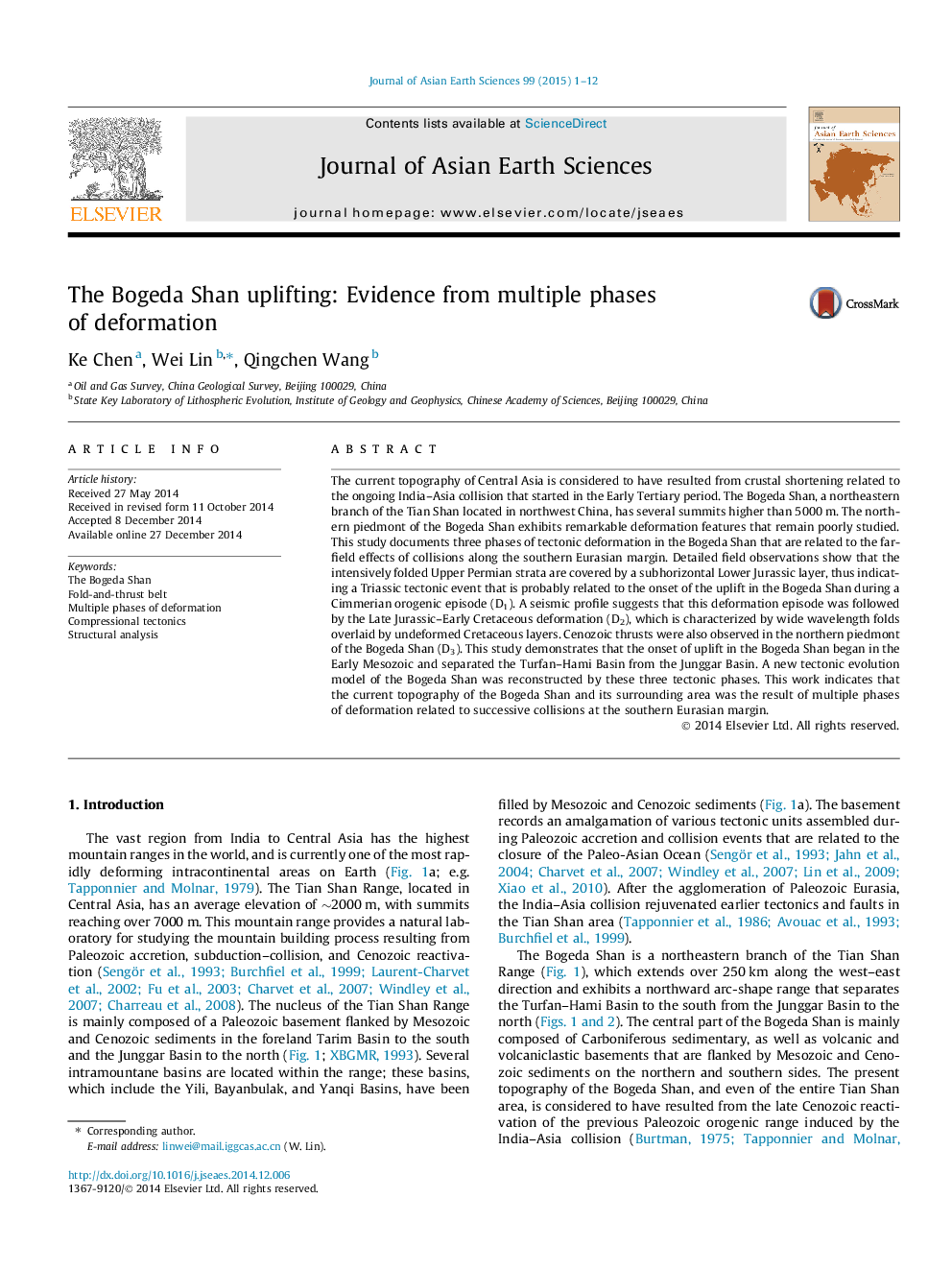| کد مقاله | کد نشریه | سال انتشار | مقاله انگلیسی | نسخه تمام متن |
|---|---|---|---|---|
| 4730456 | 1640370 | 2015 | 12 صفحه PDF | دانلود رایگان |

• Three phases of deformation took place in the Bogeda Shan since early Mesozoic.
• The onset of the uplifting in the Bogeda Shan occurred during Middle Triassic.
• The current topography of Central Asia is due to multiphase compressional far-filed effects of the collisions at the southern Eurasian margin.
The current topography of Central Asia is considered to have resulted from crustal shortening related to the ongoing India–Asia collision that started in the Early Tertiary period. The Bogeda Shan, a northeastern branch of the Tian Shan located in northwest China, has several summits higher than 5000 m. The northern piedmont of the Bogeda Shan exhibits remarkable deformation features that remain poorly studied. This study documents three phases of tectonic deformation in the Bogeda Shan that are related to the far-field effects of collisions along the southern Eurasian margin. Detailed field observations show that the intensively folded Upper Permian strata are covered by a subhorizontal Lower Jurassic layer, thus indicating a Triassic tectonic event that is probably related to the onset of the uplift in the Bogeda Shan during a Cimmerian orogenic episode (D1). A seismic profile suggests that this deformation episode was followed by the Late Jurassic–Early Cretaceous deformation (D2), which is characterized by wide wavelength folds overlaid by undeformed Cretaceous layers. Cenozoic thrusts were also observed in the northern piedmont of the Bogeda Shan (D3). This study demonstrates that the onset of uplift in the Bogeda Shan began in the Early Mesozoic and separated the Turfan–Hami Basin from the Junggar Basin. A new tectonic evolution model of the Bogeda Shan was reconstructed by these three tectonic phases. This work indicates that the current topography of the Bogeda Shan and its surrounding area was the result of multiple phases of deformation related to successive collisions at the southern Eurasian margin.
Figure optionsDownload as PowerPoint slide
Journal: Journal of Asian Earth Sciences - Volume 99, 1 March 2015, Pages 1–12